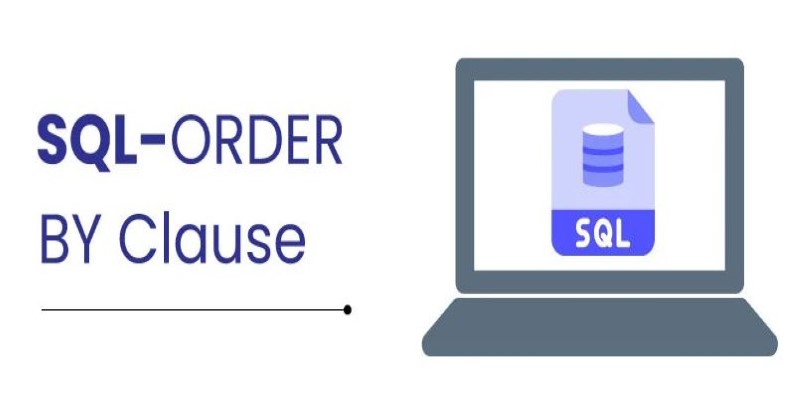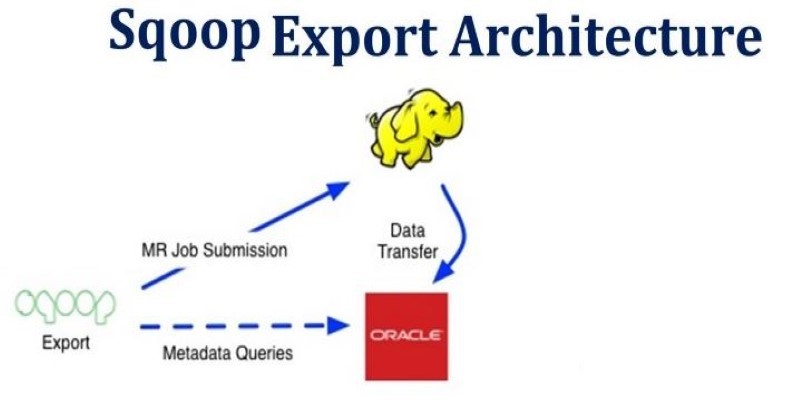Advertisement
Mention too
In SQL, there are a few commands you end up using almost every day. SELECT, WHERE, and JOIN tend to show up often. However, if you're working with any amount of data that needs to make sense to people, the ORDER BY clause becomes equally important. It's simple, but it does a lot.
Whether you're putting dates in order, sorting by name, or determining who made the highest sales, this clause helps keep the output readable and logical. Knowing how it works—and how to use it right—can make your queries much cleaner and more useful.
The ORDER BY clause in SQL lets you sort the results of a query by one or more columns. You sort in ascending order (ASC) or descending order (DESC). SQL, by default, operates in ascending order unless otherwise specified. The clause occurs only at the end of a SELECT statement, after WHERE, GROUP BY, or HAVING clauses if they are present. It is not merely a matter of sorting alphabetically or numerically—it also influences the way humans read and interpret the results, particularly when those results are lengthy or grouped.
Sorting can be done on numeric values, text, dates, or even expressions. For example, if you sort a list of employees by last name, you're working with text. If you sort by salary or hire date, you're using numbers and dates. The ORDER BY clause works on all of these and can be layered, so you can sort by one column and then by another if there are ties.

Suppose you have a table named employees with columns such as name, salary, and hire_date. When you issue a simple query:
SELECT name, salary FROM employees ORDER BY salary;
SQL will list employees from the lowest salary to the highest. If you add DESC, like this:
SELECT name, salary FROM employees ORDER BY salary DESC;
It flips the order and shows the highest-paid employees first. You can also sort by multiple columns. If two people have the same salary, and you want them listed alphabetically by name, the query would be:
SELECT name, salary FROM employees ORDER BY salary DESC, name ASC;
This adds a layer of sorting. It first checks the salary. If there are duplicates, it then sorts those by name. It works the same way with dates, so a query like:
SELECT name, hire_date FROM employees ORDER BY hire_date;
will show employees from the earliest hire date to the latest.
This clause also works with expressions or functions. For example, you might want to sort by the length of a name:
SELECT name FROM employees ORDER BY LENGTH(name);
This orders names based on the number of characters they have. You can also use case statements inside the sorting process if you need something more custom.
Sorting data seems easy at first, but there are some things to watch for. One common issue is trying to sort by a column that isn’t included in the SELECT list. SQL allows this, but it depends on how you’re using aliases or joins. If you have renamed a column or used an expression, you can refer to it in the ORDER BY using its alias. For example:
SELECT name, salary * 1.1 AS adjusted_salary FROM employees ORDER BY adjusted_salary;
Here, the alias adjusted_salary is used directly in the ORDER BY. You don’t need to repeat the expression.
Another detail is that ORDER BY can work with column indexes in a SELECT list. So, if your query is:
SELECT name, salary FROM employees ORDER BY 2;
SQL understands this as “order by the second column,” which is salary. While this is shorter, it can make your queries harder to read, especially if you go back to them later. It’s generally better to use column names or aliases for clarity.
Sorting also interacts with NULL values in different ways depending on the database. Some systems put NULLs at the top when sorting in ascending order, while others put them at the bottom. You can often control this by adding NULLS FIRST or NULLS LAST to the clause:
SELECT name FROM employees ORDER BY hire_date NULLS LAST;
This way, any employees without a hire date appear at the end of the list rather than at the beginning.

The ORDER BY clause becomes more useful when paired with LIMIT, especially when trying to retrieve top or bottom results. For instance, if you want to see the three highest-paid employees:
SELECT name, salary FROM employees ORDER BY salary DESC LIMIT 3;
Without the ORDER BY clause, LIMIT would simply return three random rows. When sorting matters, the two clauses usually go together.
Subqueries can also include ORDER BY, but the outer query doesn’t care about that order unless you specifically order the outer result. For example, in this query:
SELECT * FROM (
SELECT name, salary FROM employees ORDER BY salary DESC
) AS subquery;
The outer query isn't sorted unless you add another ORDER BY. SQL doesn't guarantee the order of the final output unless the top-level query includes the clause.
There is another subtle point to consider when using sorting in views. Some developers expect the view to preserve order if the ORDER BY is defined inside it. But again, SQL only guarantees order when it’s in the final query. If you build a view like this:
CREATE VIEW top_employees AS
SELECT name, salary FROM employees ORDER BY salary DESC;
And later query it:
SELECT * FROM top_employees;
There’s no guarantee that the result will be sorted. You’d need to use ORDER BY again in the SELECT from the view if you want to ensure the order is preserved.
The ORDER BY clause makes SQL results easier to read and more practical. It sorts text, numbers, or dates and works well with aliases, functions, and the LIMIT clause. Just remember, sorting only applies when used in the top-level query. Once you understand its behavior, using ORDER BY becomes a natural part of writing cleaner SQL.
Advertisement

Explore the top 11 generative AI startups making waves in 2025. From language models and code assistants to 3D tools and brand-safe content, these companies are changing how we create

Is the UK ready for AI’s energy demands? With rising power use, outdated cooling, and grid strain, the pressure on data centers is mounting—and sustainability may be the first casualty

Why is Alibaba focusing on generative AI over quantum computing? From real-world applications to faster returns, here are eight reasons shaping their strategy today

How Apache Sqoop simplifies large-scale data transfer between relational databases and Hadoop. This comprehensive guide explains its features, workflow, use cases, and limitations

Discover 26 interesting ways to use ChatGPT in daily life—from learning new skills and writing better content to planning trips and improving productivity. This guide shows how this AI tool helps simplify tasks, boost creativity, and make your workday easier

Learn key differences between RPA and BPM to enhance workflow automation strategy and boost enterprise process efficiency

Looking for a reliable and efficient writing assistant? Junia AI: One of the Best AI Writing Tool helps you create long-form content with clear structure and natural flow. Ideal for writers, bloggers, and content creators

What happens when blockchain meets robotics? A surprising move from a blockchain firm is turning heads in the AI industry. Here's what it means

How vision language models transform AI with better accuracy, faster processing, and stronger real-world understanding. Learn why these models matter today

Sisense adds an embeddable chatbot, enhancing generative AI with smarter, more secure, and accessible analytics for all teams

Can a robotic puppy really help ease dementia symptoms? Investors think so—$6.1M says it’s more than a gimmick. Here’s how this soft, silent companion is quietly transforming eldercare

Explore how multimodal GenAI is reshaping industries by boosting creativity, speed, and smarter human-machine interaction